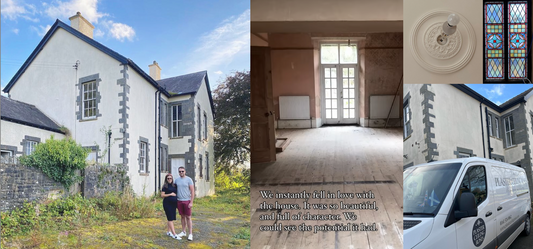They say that the kitchen is the heart of the entire home... we believe that this is true regardless of whether it is small
or large.
The household kitchen was designed for preparing and cooking meals, however over the past few years, the kitchen has slowly morphed into the epicentre of the home.
The kitchen now serves a variety of functions; the hub of the family team meeting, the spot for friendly banter, the computer room for paying bills, the kid’s art studio, and let’s not forget its original purpose - a place to enjoy wholesome food with loved ones.
If it’s time for your kitchen to have a refresh due to wear and tear, and your budget won’t allow a complete remodel, adding coving is an ideal solution. It will give your kitchen a much-needed breath of life without spending a lot of money on it.

Why is Coving used in the Kitchen?
A kitchen cornice gives the cabinets a finished look by providing a smooth transition from the upper cabinets to the ceiling. By filling up any gaps or unevenness between the cabinets and the ceiling, it helps to create a unified and aesthetically pleasant effect in the kitchen.
Unlike other design trends that may come and go, plaster coving retains its appeal and adds value to your home. Coving is a must in our opinion - kitchens look unfinished without it!
Kitchen Coving Designs
We have a large range of coving sizes and styles suitable for all kitchen designs. From large classic cornices designed for high ceilings and large spaces, to small cornices which are perfect for a smaller, compact kitchen.
We have a wide range of cornice styles; Egg & Dart, Dentil & Modillions to Floral & Ogee. Coving can be used to reflect your kitchen’s style and personality, whether it be a grand Edwardian home, or a contemporary abode, we have coving to accommodate all tastes.

How to Measure & Prepare Your Kitchen for Coving Installation
Calculating how much coving you require for your kitchen is fairly easy with a bit of know-how. There are three measurements to understand, firstly the ‘Drop’ (depth) from the ceiling down the wall, secondly the ‘Projection’ from the wall across the ceiling and finally the ‘Width’ (diagonal) across the face of the coving.
Coving is sold by the ‘Drop’ size. If for example you want 200mm (eight inch) coving in width you’ll actually need to be look for a design with roughly a 150mm ‘Drop’ and ‘Projection’. The most popular sizes of plaster coving that we sell have a drop between 90mm and 120mm.
It’s crucial to add 20% more when measuring your kitchen to account for waste, metering, and producing the greatest finish.
We are more than happy to send coving samples; you’ll then know exactly what you’re buying; its size, quality and how it will look in your kitchen. You can also show this to your fitter.
How to Install Coving in Your Kitchen
All our coving is made from the finest gypsum. Gypsum plaster is fibrous and fitting requires skill and not all builders or plasterers are experienced enough to do it. A tradesman who specialises in fitting this type of coving is known as a ‘Fibre hand’.
If you choose to undertake this as a DIY project, we have created helpful videos with professional coving installer, Mark Draper. Mark showcases the necessary steps to fit your coving & cornice and helpful tips.

Easy Maintenance Tips for Kitchen Coving
When you first install your coving we recommend painting it with two coats of matt emulsion, watering down the first coat.
Greasy ceilings are a common issue in kitchens, especially after cooking countless meals that release oil. Over time, this build-up can become unsightly and even cause unpleasant odors.
You can clean your coving with warm water and a sugar soap, this will help remove grease and dirt so the new coat of paint looks fresh. Cleaning with sugar soaps helps the new paint to stick to the walls without hampering the adhesion.
Potential Challenges to use Coving in the Kitchen
We recommend keeping your kitchen windows wide-open, (weather permitting) for about 2 days after installing / painting to avoid unwanted exposure to coving adhesive or paint fumes.
Benefits of using Coving in the Kitchen
Adding plaster coving to your kitchen can significantly increase the market value of your home. The timeless beauty and architectural details it provides are widely sought after by homebuyers who value exquisite craftsmanship and sophisticated aesthetics.
Whether you choose a smooth finish or opt for a more intricate design with decorative elements, plaster coving is an easy way to elevate your kitchen without a large expense.





